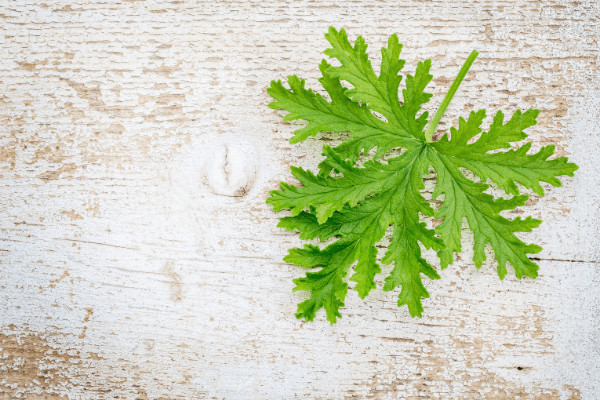Anxiety isn’t just an occasional feeling of unease; for many, it’s a pervasive presence that can have a profound influence on how we live our daily lives. Those sleepless nights filled with unrelenting worry, the gnawing knot in your stomach during the day—these are familiar companions to many who grapple with anxiety disorders. Despite the overwhelming nature of this modern epidemic, those who suffer are not alone. Indeed, support is readily available, ranging from compassionate loved ones to experienced anxiety therapy specialists dedicated to guiding individuals through these turbulent emotional storms. Understanding anxiety and its far-reaching impacts is an essential initial move in taking back control over one’s emotions and beginning the transformative journey from panic to peace.
Achieving a state of tranquility and emotional well-being is not the result of a single change or approach. Instead, it requires the thoughtful integration of multiple strategies and lifestyle modifications. By embracing mindfulness, practicing mindful nutrition, committing to regular physical exercise, and, when necessary, seeking professional help, individuals can create a robust framework for managing anxiety. Each of these strategies, when practiced consistently, holds immense potential to transform intense episodes of anxiety into enduring periods of serenity and balance in life. Let us delve deeper into these strategies to uncover their profound potential for those longing to transform panic into peace.
Understanding Anxiety and Its Triggers
Anxiety is a complex emotional experience that, although perfectly normal in specific situations, can become excessive and incapacitating when it escalates uncontrollably. It includes a range of emotions from slight worry to deep fear. Understanding the dynamics of anxiety involves recognizing both the psychological and physiological components at play. Psychological aspects often include pervasive concern, fear, or intrusive thoughts, while physiological responses encompass symptoms such as increased heart rate, sweating, or nausea.
Triggers of anxiety are as varied as the individuals who experience them. They can stem from external stressors, such as pressure from work, school, or demanding personal relationships. Financial instability and concerns about health or future uncertainties can serve as catalysts. Furthermore, environmental factors, including noise pollution, high-stress urban living, or exposure to negative media, can exacerbate anxiety symptoms. Complicating this picture are genetics and brain chemistry, which make some individuals more susceptible.
A crucial aspect of managing anxiety involves identifying personal triggers. It can be an enlightening process that requires introspection and, sometimes, external guidance. For example, while one person might find the anticipation of public speaking anxiety-inducing, another might be triggered by a lack of control in fast-paced environments. Understanding these personal triggers and their origins not only aids in developing tailored coping mechanisms but also empowers individuals to predict and manage anxiety more effectively, preventing it from significantly impacting their quality of life.
The Role of Mindfulness in Anxiety Management
Mindfulness is not merely a temporary trend or superficial remedy; it is a deeply rooted, scientifically validated practice that offers profound benefits for anxiety management. At its core, mindfulness invites individuals to engage fully with the present moment, fostering an acute awareness of their current experiences and an attitude of acceptance towards them. This engagement helps to dispel the mental clutter that frequently accompanies anxiety, allowing for greater clarity of thought and emotional resilience.
Numerous studies have documented the efficacy of mindfulness practices in reducing symptoms of anxiety and stress. These practices manifest in various ways, including traditional mindfulness meditation, breathing exercises, mindful eating, and physical activities like yoga or Tai Chi. Mindfulness meditation, for instance, encourages individuals to focus intently on their breath and bodily sensations, allowing thoughts to arise and pass without judgment. This practice cultivates an ability to approach anxiety-provoking situations with tranquility and clarity.
Furthermore, mindfulness extends beyond structured practices and can be incorporated into everyday routines, like dining, strolling, or working. By fostering a general attitude of mindfulness, individuals can create a buffer against stressful stimuli and react with greater composure. Over time, habitual mindfulness practice fosters a strong foundation of self-awareness and acceptance that can serve as a reliable anchor during stress or anxiety.
Practical Techniques to Calm Anxiety
The art of calming anxiety lies in the simplicity and effectiveness of several practical techniques. These methods are central to managing anxiety and can be integrated into everyday routines. One of the most effective methods is conscious breathing. Individuals activate the body’s parasympathetic nervous system, which counters the fight-or-flight response by engaging in slow, deep, and deliberate breathwork. Breathing helps to slow the heart rate and promote a soothing state of relaxation.
Progressive muscle relaxation is another empowering method that encourages individuals to tense, hold, and systematically release muscle groups throughout the body. This focused physical technique reduces muscle tension, often accompanying stress and anxiety, promoting physical relaxation and control. Visualization techniques offer another effective refuge, inviting the mind to imagine serene settings and engage all senses in this imagery, providing a mental escape that contrasts with distressing thoughts.
Moreover, journaling and expressive writing are influential emotional outlets, providing clarity and perspective on troubling thoughts. Engaging in creative expression through art, music, or dance can also channel anxiety into constructive release, transforming negative energy into creative productivity. This holistic approach to anxiety management offers quick and accessible relief techniques and fosters a long-term framework for emotional resilience and empowerment.
Nutritional Influences on Anxiety
It is rightly said that food can fuel our bodies and our minds. Nutrition has an understated yet significant role in managing anxiety, with growing evidence highlighting how dietary choices affect brain health and mood regulation. Understanding this relationship allows individuals to make informed diet choices to support emotional well-being. Antioxidant-rich foods like berries and vegetables like spinach and kale are essential in fighting oxidative stress, contributing to overall mental health. Magnesium, abundant in foods like avocados, almonds, and dark leafy greens, is crucial in regulating the body’s stress response and promoting calmness. Conversely, diets high in caffeine, sugar, and processed foods have been linked to increased anxiety symptoms. Caffeine, a stimulant for the central nervous system, may intensify anxiety by elevating heart rate and feelings of unease. Diets high in sugar frequently result in imbalances in blood sugar, causing mood fluctuations and heightened irritability. By exploring nutritional advice for calming anxiety, individuals can adopt a balanced diet that reflects a commitment to physical and mental health, facilitating emotional equilibrium.
Exercise as a Tool for Anxiety Relief
Physical exercise has long been regarded as a vital component of a healthy lifestyle, but its benefits extend far beyond physical health to profoundly impact emotional well-being. Regular physical activity is often dubbed nature’s best antidepressant. The physiological effects of exercise are wide-ranging, and the most notable among them is the release of endorphins — the body’s natural mood elevators.
The Power of Social Connections
Humans are inherently social beings, and the role of social connections in maintaining mental health cannot be overstated. Engaging with others maintains a sense of belonging and offers invaluable support during challenging times. Social interactions provide opportunities for sharing experiences, gaining perspective, and receiving understanding and encouragement, which are essential for alleviating anxiety and enhancing resilience. Having a dependable support network diminishes feelings of loneliness and alienation often associated with anxiety. Expressing thoughts and emotions helps put concerns into perspective, providing relief and emotional comfort. Building and maintaining meaningful relationships through community involvement, shared interests, and support groups fosters personal growth and enables better coping strategies.
Participating in social activities enhances one’s sense of belonging and community. These activities offer structured opportunities to connect with like-minded individuals while building new friendships based on shared values and interests. Supportive social networks provide a safety net, contributing to mental fortitude and reducing susceptibility to anxiety. Embracing social connections fortifies mental health, offering indispensable emotional nourishment that fortifies resilience against life’s stressors.
Seeking Professional Help
For many individuals, anxiety can escalate to levels that necessitate professional intervention. Acknowledging that seeking help from a qualified mental health professional is a courageous and constructive step toward achieving emotional well-being is critical.
In some cases, medication may be a necessary adjunct to therapy. Psychiatrists can prescribe medications that help balance brain chemistry, such as selective serotonin reuptake inhibitors (SSRIs), which have proven effective for many suffering from anxiety. Medicine can provide symptomatic relief, enabling individuals to participate more effectively in therapy and daily activities. Combining medication and psychotherapy offers a comprehensive approach to managing anxiety, grounding the individual in both understanding and symptom management strategies. Working with a mental health professional ensures a personalized and structured approach to anxiety management tailored to an individual’s unique needs and circumstances. Professional guidance provides an invaluable foundation for peace, equipping individuals with tools and insights that foster resilience and lasting emotional equilibrium.
When to Make Lifestyle Changes
Anxiety can often serve as a signal to reflect on one’s lifestyle and make necessary changes that can support long-term well-being. Embracing change requires courage and introspection, but it can lead to transformative benefits that reduce anxiety and enhance the quality of life. Lifestyle changes often involve reevaluating priorities and modifying daily habits to create a more balanced and harmonious existence. Establish a healthier work-life balance. It consists in prioritizing self-care activities and ensuring adequate downtime, enabling individuals to recharge and decompress from daily stressors. Developing healthier sleep routines is equally crucial; quality sleep is foundational to emotional health, while poor sleep exacerbates anxiety and stress. A nurturing home environment promotes mental well-being and creates a haven where individuals can retreat and recharge. Simple changes, such as decluttering, creating a designated relaxation space, or introducing calming elements like plants or ambient lighting, can significantly enhance the sense of calm at home.
Recognizing the need to adjust daily habits can significantly impact anxiety levels, empowering individuals to cultivate behaviors that enhance well-being. As pragmatic resources outline, making lifestyle changes involves a commitment to ongoing personal growth and development. Adopting positive lifestyle shifts is a significant step toward creating a more fulfilling, sustainable, and anxiety-free life.





